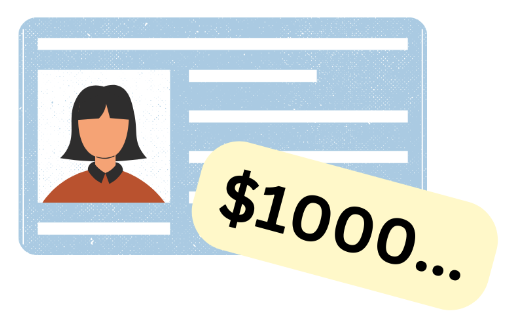
As Solon High School students begin going through the process of getting their license, the exorbitant price of what it takes to get a license as a minor becomes alarming to many. In Ohio, driver’s education and in-car sessions can cost up to $1000. For a teenager making minimum wage, this is almost an impossibility.
Sophomore Zora Bagnoli believes that the price of driver’s education is excessive.
“I had to pay for [drivers ed] all by myself and being a teenager with a job part-time it’s a lot,” Bagnoli said. “I think I’ve spent around $400-$500 dollars total.”
These inflated prices weren’t always the case. Schools only started shifting drivers education to private businesses in the 90s, 60 years after drivers education programs first appeared. Why did this shift start to happen?
Budget cuts.
Throughout the 80s and 90s, school budgets were cut exponentially— it was almost impossible for some schools to keep up. As a result of this, thousands of free drivers education programs across the nation began disappearing. According to Forbes, the new era of drivers education programs have fallen short in adequately educating students on the rules of the road.
According to a Volvo Car USA study of 2,000 adults, one fourth of Gen-Z believes that they would not be able to pass a drivers education test if they took it today. 60% of Americans believe that today’s driver education courses do not prepare students to be good drivers. And 90% of Americans said driver’s education should be a part of public education today.
The lack of free driver education in public schools has been extremely challenging for many students whose parents are not willing or do not have the ability to pay for it.
Sophomore Reese Jeffery says she hasn’t been able to complete driver’s education at all.
“I haven’t done drivers ed yet because it’s too expensive,” Jeffery said. “To be able to afford driver’s ed I would have to work 10 hours, and for in-car lessons, I would have to work 40. By that time I’ll already be 16 before I can even begin doing driver’s ed.”
Expecting 15 and 16 year olds to work for 50 plus hours to be legally allowed to drive a car, something that in the United States is a necessity, is absolutely ludicrous. Many students need part time jobs to help save for college, pay for basic needs, and even in some cases, keep their family afloat. There is no way, in most cases, to get to those jobs without a car.
“It’s very important to be able to drive a car,” Bagnoli said. “Sometimes your parents just can’t get you there on time.”
Clearly the demand and need for public drivers education courses are there, so what can schools do to ease this load on students? Public schools need to begin offering free drivers education classes. When someone turns 18, driver education is not required anymore, many people cannot wait until this point due to other responsibilities.
“Some people can’t get access to a car until they’re 18 [because of the cost], a drivers ed class would definitely be useful,” Bagnoli said.
It is time for public schools to begin expanding driver education into their curriculums. These courses can be expanded into health classes, or could be added as a standard semester class. Having an entire semester devoted to driver’s education would expand the topics covered in online courses, and place more emphasis on specific topics that people ignore in online courses. To teach driver’s education at a high school an instructor must obtain a bachelor’s degree, a teaching license, have a clean driving record, and take a driving educators course and a course to prepare for behind the wheel training. The average salary for a driving instructor is $31,200 a year or $15 an hour, the average price for a bottle of shampoo.
As the cost of living and college goes up, so does the need for young drivers to be able to get their licenses. At this time, it’s more important than ever for Solon Schools to support students who need to be able to get to school, work, and other places to be able to support themselves and their families.
A free drivers education course would make it easier for students to save up to get a car if their parents do not have enough money to do so. It would also put less financial strain on parents who don’t want to spend thousands of dollars to get a car for their child.
Sophomore Ash Goodman fully supports the idea of Solon offering free drivers education courses.
“I would absolutely take a free drivers ed course if Solon offered it,” Goodman said. “Sometimes moms break their ankles and kids need to pick up groceries and get to school and meet up with friends.”












